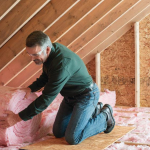This summer would you like your garden plants to be chemical-free, trouble-free, and taste out of this world? Then you need to feed them as nature intended, my friend…with humus! In this article, gardening expert Rod Turner shares four little-known composting secrets that will have your garden bursting with healthy plants.
How Your Current Gardening Practices are Killing Your Garden
Here’s a little-known fact: even most organic fertilizers feed plants just like chemical fertilizers do – through the water in the soil.
This causes a lot of problems – because, like you and me, plants don’t feed continuously. They only need to feed when it’s warm and the sun is shining.
But they do need to transpire water through their leaves almost constantly and take up water from the soil.
If a plant is fed from soil water by having the fertilizer dissolved in the water, the plant gets far too many nutrients, and is essentially force-fed into poor health – with the unused fertilizer sitting around in the plant.
The Quickest Way to a Natural, Better-Tasting Garden
But there’s a big difference when you feed your plants with humus: plants fed with humus choose when and what nutrients they take up with their fine white feeder roots. What you get is a much better-tasting, totally natural, trouble-free plant.
Humus is a living, rubbery substance that holds the plant food separate from the soil water, but still makes it available to plant roots.
The quickest way to get lots of proper humus into your soil is to apply properly-made colloidal humus compost . Unfortunately, most compost methods aim for a soil-like substance – the totally wrong result.
If you end up with compost that is like rich soil, it might be good for your plants, but you have missed out on a far, far higher quality result. If made properly, there is no need to turn compost. It doesn’t smell and you don’t need fancy equipment.
How “Modern” Gardening is Killing Our Environment
In a minute I’m going to give you some secrets for making top-class compost. But first I’d like to tell you about the massive damage that modern growing methods do to our fragile environment.
First of all, by fertilizing with things that dissolve in the soil water (yes, even manures do this) most of it never gets to the plant! It’s washed out of the soil and ends up polluting our waterways and oceans with drastic consequences.
One of these forms of pollution is heavy metal contamination with things like cadmium and mercury. These end up concentrated on our plates in seafood. The washed out nutrients also cause uncontrolled algae blooms.
Soluble fertilisers are also a huge waste of finite resources, as they are continuously being washed out and need to be regularly applied to (force-) feed our plants.
There is NO storage of these fertilizers in the soil.
Huge amounts of oil are consumed in both manufacture and transportation, too.
Humus, on the other hand, acts like a bank and stores plant food in the soil for when it is required. Humus production requires soil biology, and soluble fertilising vastly reduces or completely wipes out this biology. No biology results in no humus bank, and also destruction of soil structure and essential air within the soil. The end result is dead lifeless soil that won’t grow anything well unless you add fertilizer.
As these overfed, unhealthy plants are vastly more prone to pest attack and disease (a case of nature removing the weakest!), huge amounts of pesticides and other dangerous chemicals are poured on.
Guess where they end up? You got it – on your plate, or in the water.
Want a Healthy, Natural Garden This Summer? Avoid These 4 Mistakes!
The quickest and most effective way to make your garden healthy and natural is to make humus compost. But it’s not a fool-proof process. So here are four biggest mistakes people make when trying to compost:
- The materials need to be well mixed (you need nitrogen and carbon materials in close contact for the composting bacteria to thrive).
- The materials need to be constantly moist to the level of a damp sponge for the duration of the composting. This is probably the biggest mistake I see people making – many gardeners just let the materials dry out.
- You need to collect the materials separately, then combine them at one time in the newly created compost pile (otherwise you are only composting small amounts over time that are all at different stages).
- The right bacteria need air, so your compost materials need the correct amount of airflow (how you can do this without turning I’m not going to tell you here 🙂
So, there you go! If you’d like to have a beautiful, healthy, natural garden this summer, head on over to World’s Best Compost to learn how to grow your own Garden of Eden!






I got this web page from my buddy who told me on the topic of this site and now this time I am browsing this web page and reading very informative articles or reviews
at this place.